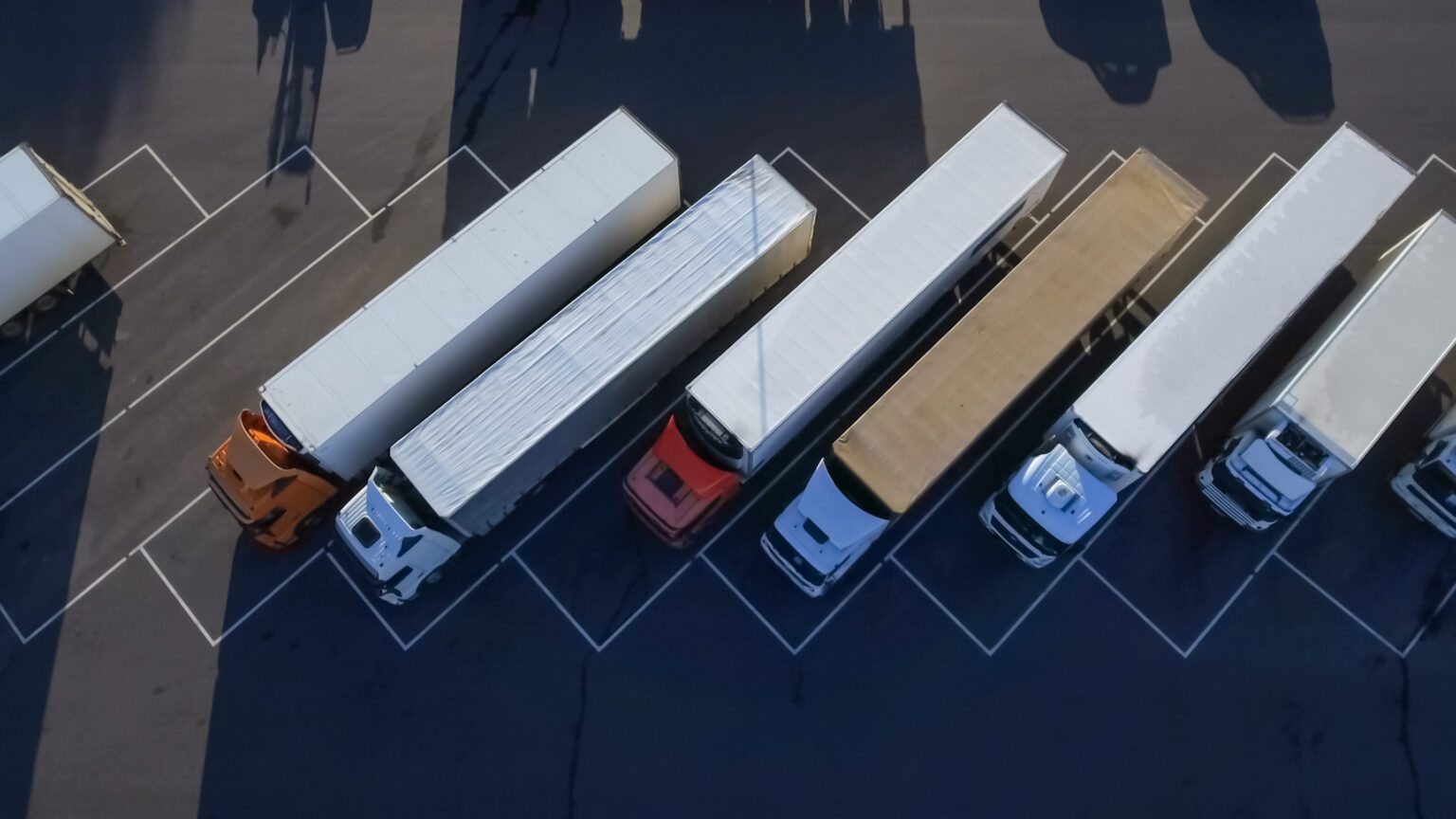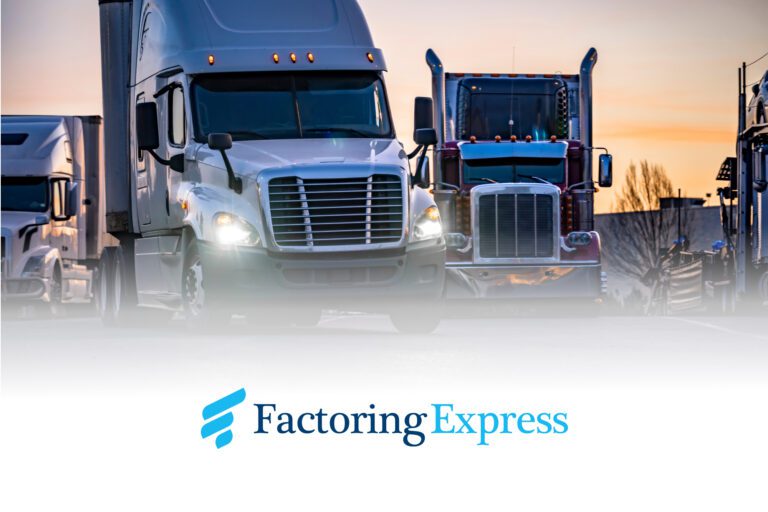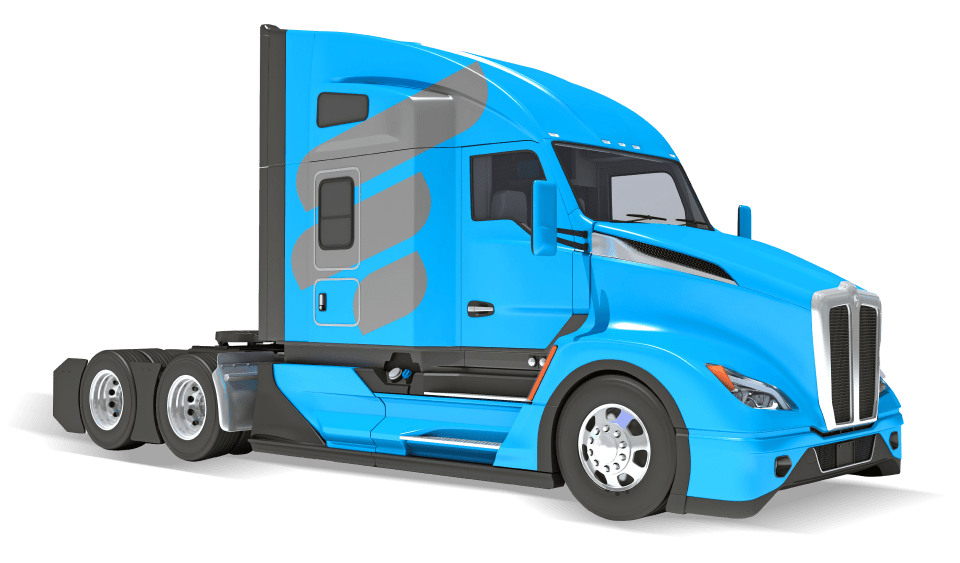Thinking about steering your own trucking business? Before you hit the gas, buckle up and pay attention because here’s the hard truth – many aspiring trucking entrepreneurs end up stranded on the side of the business highway, broke and frustrated.
Why? They lack a crucial document that serves as the North Star in the trucking cosmos – a well-crafted trucking business plan.
This guide is your key to understanding why you need a trucking business plan, what should go into it, and how to put it all together without hitting unnecessary roadblocks.
Why You Need a Trucking Business Plan

Starting a trucking business without a solid plan is like navigating through a dense fog without headlights. You might move forward, but the chances of hitting obstacles are pretty high.
Here’s the deal – the road to success in the trucking industry is rugged, and without a well-thought-out guide, you’re setting yourself up for a bumpy ride. Here’s why starting a trucking company business plan is crucial:
Avoid Pitfalls
Ever heard the saying, “Forewarned is forearmed”? Well, it perfectly applies to the world of trucking entrepreneurship. A comprehensive trucking company business plan is your shield against common pitfalls that can throw your journey off course.
From unpredictable fuel price hikes to unexpected maintenance costs, having a plan allows you to navigate these challenges with strategic foresight.
Mitigate Risks
The road isn’t always smooth, and in business, it’s no different. A transport business plan is your risk management toolkit. It helps you identify potential roadblocks, assess risks, and develop strategies to steer clear of them. Think of it as your preemptive strike against the uncertainties that can slam the brakes on your success.
Set Your Business Up for Success
Imagine embarking on a cross-country trip without a map. You might eventually reach your destination, but the journey will be filled with wrong turns and wasted time.
Similarly, a well-crafted business plan for trucking company sets clear objectives, helping you define your route to success. It aligns your team, your resources, and your efforts toward a common goal, making sure you’re not just moving but moving in the right direction.
In a nutshell, a trucking business plan isn’t just a piece of paper. It’s your compass, your guide, and your strategic playbook. It’s the difference between navigating the business terrain blindly and cruising confidently toward your goals.
How to Write Your Trucking Business Plan
Crafting a truck driving business plan might sound daunting, but fear not! Think of it as plotting your course on a treasure map; once you know the landmarks, the journey becomes more manageable. So, here’s your step-by-step guide:
1. Know Your Destination: Executive Summary
Start with the basics. In your executive summary, paint a clear picture of what your trucking business is all about. This is your chance to shine, so don’t hold back. Briefly cover your vision, mission, and key objectives. It’s like giving someone the coordinates to find your treasure.
2. Map Out Your Route: Company Description
Dive into the nitty-gritty details with your company description. Think of it as describing the terrain of your journey. What makes your trucking business stand out? What challenges do you anticipate, and how do you plan to overcome them? Unveil your unique selling proposition (USP) here.
3. Survey the Landscape: Market Analysis
In the market analysis section, you’ll delve into the lay of the land in the trucking industry. Identify your competitors, understand your target market, and uncover opportunities and threats. This step is crucial—it’s like studying the weather and road conditions before hitting the highway.
4. Assemble Your Crew: Organization and Management
In the organization and management section, introduce the key players in your trucking venture. Highlight their strengths, skills, and roles. It’s like introducing the members of your team before embarking on the adventure.
5. Load Up Your Cargo: Services Offered
What will you be hauling on your journey? Specify the types of freight you’ll transport in the services offered section. Tailor your services to meet the demands of the market. It’s akin to deciding what treasures you’ll be carrying in your truck.
6. Plot Your Course: Marketing and Sales Strategy
In the marketing and sales strategy section, detail your customer acquisition plan. How will you market your services, and what’s your strategy for securing contracts? This is your roadmap to finding and winning your treasure.
7. Fuel Up: Funding Request
In the funding request section, outline your financial needs. What are your startup and operational costs? Clearly articulate how much fuel (or funds) you need to keep your trucking business running smoothly. Here, you might consider factoring for trucking.
8. Navigate Your Finances: Financial Projections
In the financial projections section, provide realistic revenue and expense forecasts. It’s like predicting how much treasure you’ll accumulate on your journey and what expenses you’ll encounter along the way.
9. Secure Your Permits: Appendix
Last but not least, in the Appendix, attach all the necessary permits, licenses, and contracts. This is your legal checkpoint, ensuring you’re compliant and ready for the road ahead.
There you have it, the roadmap to writing your business plan for trucking business. Each section is a crucial landmark on your journey to success. So, grab your pen and paper, and let’s start plotting your course to a thriving trucking business!
Financial Projections
Financial projections in your trucking business plan are essentially a detailed look at the numbers – a roadmap of your expected income, expenses, and profits.
1. Creating Realistic Forecasts
This step involves making informed estimates. Project your income by forecasting sales and revenue. On the flip side, estimate your expenses, considering everything from fuel and maintenance to personnel costs. The goal is to be realistic; avoid overly optimistic or pessimistic projections.
2. Addressing Financial Feasibility
Financial feasibility is about determining if your business can sustain itself. Evaluate whether your projected revenue can cover all your expenses and leave room for growth. This isn’t just for potential investors. It’s a practical examination of whether your trucking business can stand on its own financially. Here, perhaps fuel cards can greatly help with getting discounts.
Funding Requirements
Determining the financial needs of your trucking business is a critical aspect of your business plan. This section is not about wishful thinking; it’s a practical assessment of how much capital you require to get your wheels turning and keep them rolling.
1. Estimating Startup and Operational Costs
Start by calculating the costs associated with starting and running your trucking business. This includes expenses like vehicle acquisition, licensing fees, insurance, personnel salaries, and maintenance. Be meticulous in your estimation to avoid surprises down the road.
2. Exploring Funding Options
Once you’ve tallied up the numbers, the next step is exploring how to secure the necessary funds. Whether it’s through loans, investors, or a combination of both, understanding your funding options is crucial. Be realistic about what you can afford and the terms associated with different funding sources. If you don’t know it yet, fuel advances can be an option for your trucking business.
Implementation Plan
Now that you’ve outlined your business plan, it’s time to put it into action. The Implementation Plan is all about turning your ideas into tangible steps, making your trucking business a reality.
1. Executing Plans
In this section, we focus on execution. Break down your business plan into practical tasks. Each task should be specific, achievable, and contribute to the overall goal. The aim is to make your plan actionable and manageable.
2. Detailed Action Plan
Provide a detailed action plan, listing the tasks that need to be accomplished. This could include obtaining necessary licenses, hiring staff, acquiring equipment, and establishing operational processes. This detailed breakdown ensures nothing is overlooked.
3. Milestones and Timelines
Set specific milestones for your business. These are key achievements you aim to reach, such as revenue targets or business expansions. Timelines add a time-bound dimension to your plan, ensuring that tasks are completed within a specified timeframe.
The Implementation Plan is where your plans take shape. It’s a practical guide that transforms your business concept into reality. By following these steps, you’ll navigate the path from planning to execution, bringing your trucking business to life.
Common Mistakes to Avoid

To ensure a smooth journey, it’s crucial to be aware of common pitfalls that can veer you off course. Here are some road signs to watch out for – common mistakes to avoid when venturing into the world of trucking entrepreneurship:
1. Not Underestimating Start-Up Costs:
Many new trucking business owners underestimate the initial costs involved. Make sure to thoroughly research and budget for all expenses, including truck acquisition, permits, licenses, and operational costs.
2. Neglecting a Comprehensive Business Plan:
Skipping the creation of a detailed trucking business plan is a common mistake. Develop a comprehensive plan outlining your goals, strategies, and financial projections. It serves as a roadmap for your business.
3. Ignoring Regulatory Compliance:
Trucking is highly regulated. Failure to comply with local, state, and federal regulations can result in severe consequences. Stay informed and ensure your business adheres to all necessary permits, licenses, and safety standards.
4. Failure to Secure Adequate Insurance:
Accidents can be costly. Don’t neglect comprehensive insurance coverage for your trucks, cargo, and liability. Adequate insurance protects your business from financial setbacks in case of unexpected events.
5. Lack of Maintenance Planning:
Regular maintenance for your fleet is essential. Neglecting it can lead to breakdowns, delays, and extra expenses. Implement a strict maintenance schedule to keep your trucks in good condition and prevent unforeseen issues.
6. Poor Route Planning and Time Management:
Efficient route planning and time management are critical in the trucking business. Invest in tools and technology to optimize routes and manage time effectively. This ensures timely deliveries and cost-effective operations.
7. Inadequate Marketing and Customer Acquisition:
A lack of marketing can hinder your business growth. Develop a solid marketing strategy, establish an online presence, and actively seek clients. Visibility is crucial for attracting and retaining customers.
Monitoring and Evaluation
The journey doesn’t end once your trucking business is up and running. The Monitoring and Evaluation section of your business plan is like having a constant checkpoint system – a methodical way to ensure you’re on the right route and making necessary adjustments.
1. Keeping Your Finger on the Pulse
This is all about staying vigilant. Regularly assess the performance of your trucking business against the benchmarks and goals set in your plan. It’s not a one-time thing; it’s an ongoing process to keep your operations finely tuned.
2. Making Necessary Adjustments
Change is constant, and your business plan should be flexible enough to adapt. If something isn’t working as anticipated, identify the issues and make necessary adjustments. It could be refining your marketing strategy, optimizing operations, or adjusting financial projections based on real-world results.
Ready to launch your trucking business?
Don’t let your dreams idle on the side of the road. Take charge, put your insights into action, and start crafting your Trucking Business Plan today. This is your roadmap to success. Don’t leave it in the glove compartment.
As you navigate the financial terrain of your trucking business, consider the services of Factoring Express. Specializing in factoring for trucking, Factoring Express provides the essential cash flow you need to keep your wheels turning smoothly. It’s the extra boost that can make a significant difference on your journey.
Remember, every successful journey begins with a single step. Your trucking business is no different. So, buckle up, grip the wheel, and drive your dreams into reality. The road to success awaits, and you’re in the driver’s seat! Call Factoring Express today to give your trucking business the financial support it deserves!




